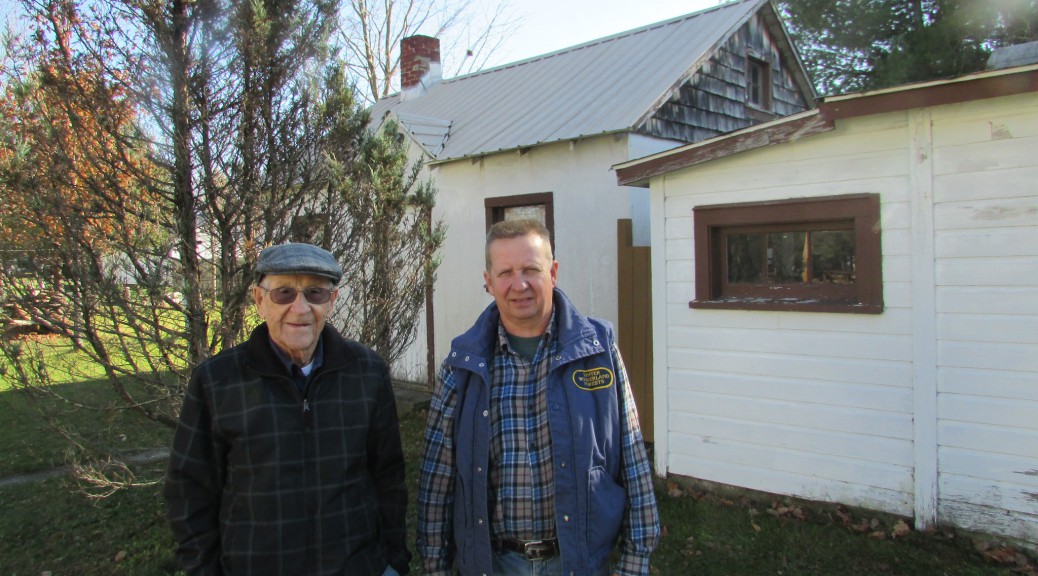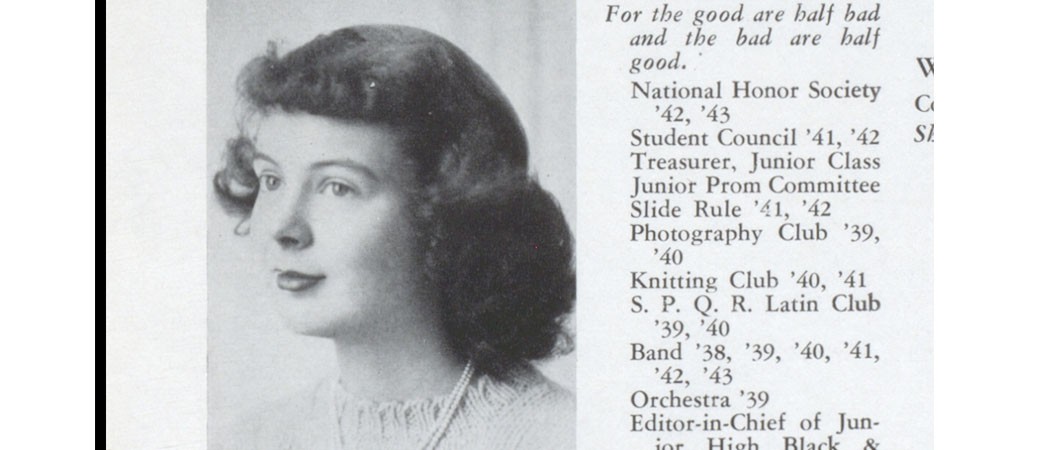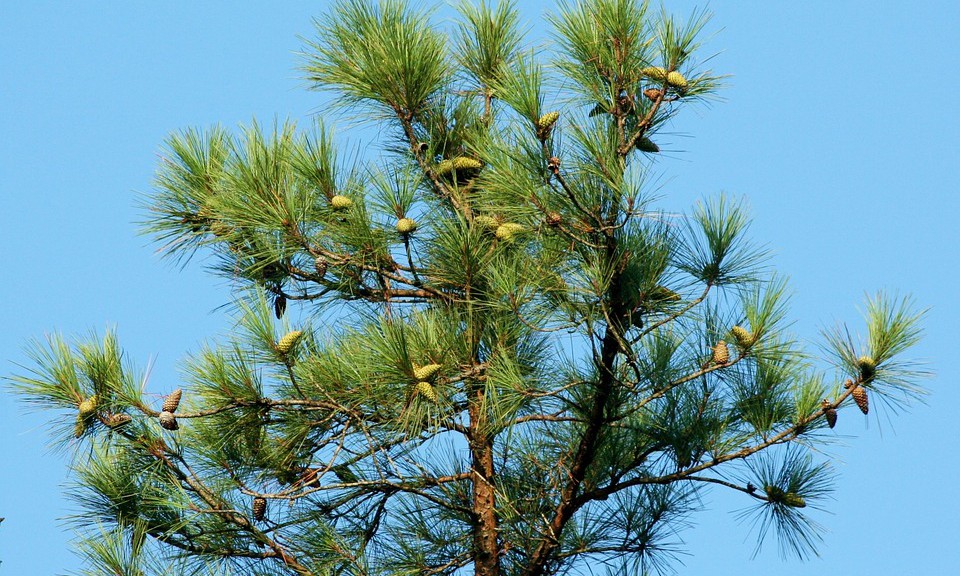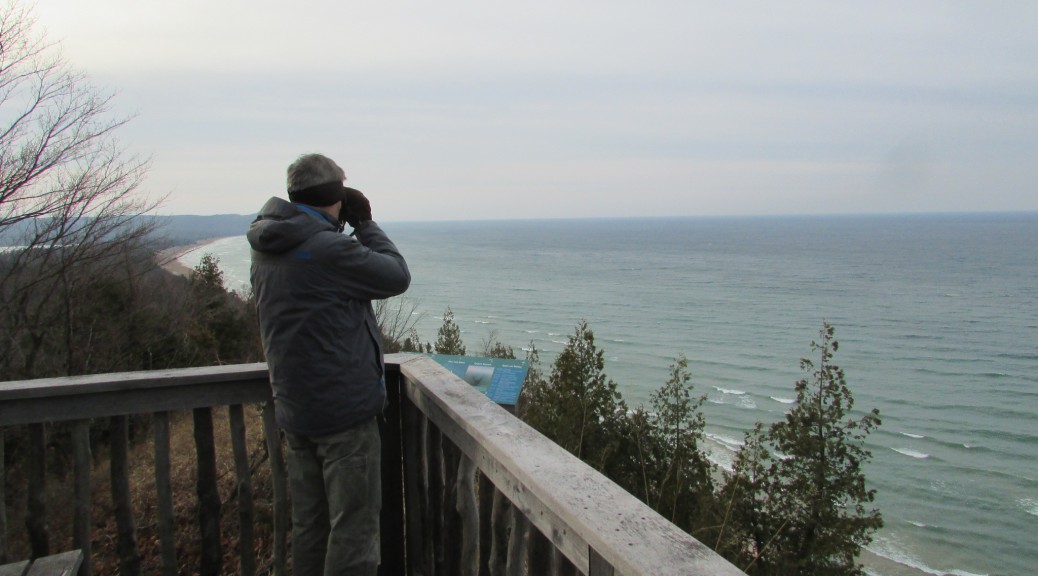This high school, featuring the library shown above, received honors for its design in 1959. Gordon Cornwell was the architect of the building. Which school is it?
Tag Archives: featured
Community Planting Festivals
Just in time for the coming of spring we reprint this section of a speech delivered by Mrs. Hulst in 1915. There she discusses the possibility of making schoolyards into gardens, advocating that woodlots close to school should be left wild to be used as nature study areas. The essay reminds us of efforts in the Detroit public schools to reclaim lots once filled with residential homes, since fallen to decay, and convert them to vegetable gardens.
Community Planting Festivals
by Mrs. Henry Hulst
….Would it not be an act to merit public gratitude if some one should introduce these rare and lovely things [wild plants] into our landscape?
The first thing that we should do is to educate the children and the community to work for beauty. It should be the happy work of the children, aided by the Community, on two joyous Festival Days of the Spring and Fall, to devote time and effort to some public planting of their grounds and roadsides. The planting of their small school yard will be a good beginning, but it is to be hoped that not many years hence the boundaries of the yard will extend until the lot is large—five acres—ten acres—forty. In the Government Bulletins I read of schools in New Jersey and Colorado that are starting with seven acres, and our own new Township School at Houghton has forty. Our National Commissioner of Education is urging the large yard and the farm school.
Is this too much? I own that when I first heard Professor Roth, the enthusiastic Forester of our University, maintain that school lots should be not less than ten acres, I thought him extreme, but when I hear all that a ten acre lot can do for education of the school and the community, it seems moderate, and most wise, and only strange that it has taken so long to arrive at that wisdom. The world seems to have waited until the 20th century for it to be held up as an ideal—perhaps it will not wait another century before the ideal is being widely realized, for progress is rapid in these days. A ten acre lot, equipped with all of the trees, flower and shrubs of the locality, including stock to be used in teaching fruit culture, would make a first class laboratory for the study of the ways of Nature, and would “pay for its keep” many times over in a few years by the higher efficiency of the people of the neighborhood as farmers. I am told that it would pay well as a wood lot, covering fuel expenses and even giving some revenue, while a forty acre wood lot would pretty nearly endow the school and set the community free from school taxes, aside from its value for teaching purposes. What valuation should be put upon it as a things of beauty in the neighborhood, a park where people could gather for picnics, and public gatherings that can be held out of doors? Should cities have all of the parks? Some cities now have more of natural beauty than the open country.
It is enough to say that the ideal school of the future will be a building that will not “just do” but a dignified public edifice, an index to ideals of neatness, beauty and efficiency, as wsell as the learning from books, and where the community will meet to consider social betterment and to enjoy social privileges. It will be surrounded by flowers, which the children love, and tend as part of their work; it will be surrounded by the park of the district. In the city each school will have its garden, and every district will have its playground and park space.
Found in Keeler, Fred Lockwood, Special Day Programs for Michigan, State Superintendent of Public Instruction, Lansing: 1915, pp.15,16
The entire essay can be read in the Nelson room of the Woodmere branch of the Traverse Area District Library. Pages may be photocopied for those wanting to read it carefully at home.
Header image courtesy of the United State Forest Service Region 5, https://www.flickr.com/photos/usfsregion5/3598029211.
The Saunas of Kaleva: Revisiting the Land of the Heroes
by Stewart A. McFerran

Arthur Hulkonen grew up in Kaleva, Michigan, at a time when saunas stood in most backyards of town and on surrounding farms. At that time, neighborhood and family saunas were entrenched in community life and stoked with wood on a weekly basis. Routinely, sauna baths were taken and enjoyed by all. Not surprisingly, Arthur’s parents and many of their neighbors hailed from Finland, a country known for its saunas.
Shrouded in the mists of long-forgotten times, the Kaleva were a race of giants called Titans occupying a land called Kalevala. Songs of their deeds are still sung on the heaths of Finland. Many of them tell of a Finnish hero, Vainamoinen, who reveled in sauna heat after performing such deeds as riding an eagle or catching a pike as big as a school bus. When wounded from conflicts, he and his brothers would go to the sauna to heal.
The Finnish national saga known as the Kalevala was compiled by Elias Lonnrot in 1849. Containing 22795 lines of poetry, it became the Finnish national epic and a source of pride as Finland became a nation. Considered a world classic, the Kalevala has been translated into many languages. The great Finnish composer Sibelius was inspired by its power and beauty.
I have a good mind
Take into my head
To start off singing
Begin reciting
Reeling off a tale of kin
And singing a tale of kind.
The words unfreeze in my mouth
And the phrases are tumbling
Upon my tongue they scramble
Along my teeth they scatter.

Wednesday and Saturday were the days they fired the saunas of Kaleva, Michigan. Wood-burning stoves were lit, the heat from the large stoves filling the small cedar-lined rooms. Rocks on the top of the stoves sputtered and popped when splashed with water. Steam enveloped the Hulkonen family and their friends, sitting on high benches and thrashing their skin with birch whisks to improve blood flow.
Many strange beliefs and superstitions are connected with the sauna and with bathing customs. The ancient Finns believed that fire came from heaven, and was sacred. The fireplace and the pile of stone in the sauna were altars, therefore. All diseases and evils of the body were driven out by means of various rites and magic spells. The Finnish word loyly–meaning the steam that rises from the stones–originally signified spirit or even life. In the sauna, one must conduct oneself as one would in church– according to a Finnish saying.
Art Hulkonen met his wife, Mildred, at her family sauna in Kaleva after returning home from World War II, this meeting proving that the family sauna was, indeed, a jolly meeting place. Keeping alive the tradition, Art’s son Allen A. has a sauna in his backyard, now one of the few in Kaleva still in operation. Hulkonen family reunions take place every couple years at the Bear Club.

The Bear Club is north of Kaleva on Bear Creek, its light blue sauna, just feet from the creek where sauna bathers can take a cool dip. The Club has a long history: Vernor Sarenius bought the property in 1912, farming the land until returning to his native Finland. In 1930 it was bought by a group of Standard Oil agents and served as a retreat until 1966, when the Hulkonens bought it.
If you walk down Sampo Avenue in Kaleva, you can see where the saunas once stood. Sauna sites can be found in many backyards there. Once I stopped at a garage sale on Waotski Street and noticed a dilapidated stone shed at the back of the yard. It had been painted pink and had a green roof. Sure enough—the sales attendant told me that it had once been a sauna.
After a few inquiries, I found a sauna behind the barbershop and another behind the hardware store. There is a sauna in the yard of the old parsonage of the Lutheran church and a foundation of a sauna behind the Kaleva Bar. A garden blooms on the site of the Hodimakie family sauna.
Tovo Johnson’s old homestead is just down the road. I could still see the large sign on the sauna outbuilding that reads: “Tovo’s Sauna.” Tovo and all Finnish enthusiasts of the sauna will relate to this verse from the Kalevala:
I have stoked up the sauna
Heated the misty bath-hut
Softened the bath-whisks ready
Steeped the pleasant whisks.
Brother, bath your fill
Pour all the water you want
Wash your head till it is flax
Your eyes till they are snowflakes!
Hillari Johannes Viherjuuri describes the whisk–as well as botanical details–that was used in saunas in his book, The Finnish Bath:

The Birch whisk is an essential part of the Finnish sauna. The best whisk is made from leafy branches freshly gathered in summer. But whisks are used in Winter as well as Summer. In the old days a special week was set aside for making whisks. Curly birch (betula verrucosa) a subspecies of silver birch is the best.
The traditions of Finland live on in Kaleva Michigan and stories from its recent past merge with the mythology of the Kalevala. To tell a final myth, I will speak of Ilmarinen (Vainimonen’s brother) who forged a magic sampo. Clues to the magic of the Sampo are found in the text of the Kalevala. Some claim it is a pillar that connects Heaven and Earth, while others say it is a mill that can make gold out of thin air. When the Sampo was lost, enormous changes rocked the land of heroes before it was returned.The Kalevala reads:
Then the smith Ilmarinen said:
Put this into words: ‘I’ll be
Able to forge the Sampo
Beat out the bright-lid
From a swan’s quill tip
a barren cow’s milk
a small barley grain
a summer ewe’s down
because I have forged the sky
beaten out the lid of heaven
with nothing to start off from
with not a shred ready made.
The shiny lid of the Sampo was broken and scattered after it was made in Kalevala.
Then she reached for the Sampo
With her ring finger: she dropped
The Sampo in the water
felled all the bright-lid
Down over the red craft’s side
In the midst of the blue sea;
There the Sampo came to bits
And the bright-lid to pieces.
The saunas of Kaleva have fallen down, but the sites where they once stood litter the village. A few persons still practice the tradition of sauna there and elsewhere in Northern Michigan–you might see a sauna if you walk down Sampo Avenue.
Who knows? Maybe you will even see the shiny lid of the long-lost Sampo.
Three final notes:
February 28, is Kalevala day in Finland.
The village of Kaleva Michigan will hold Kaleva days July 15 – 17 2016
Kalevala is available for checkout at the Traverse Area District Library.
S. A. McFerran is a regular contributor to the Grand Traverse Journal, and has built his own sauna where he experiences a loyly each week.
How High the Moon?
When a former science teacher can’t sleep, questions come unbidden to occupy his consciousness. So it was one cloudy night when I conceived the following question: Does the full moon make a high arc across the sky during winter or a low one? After some consideration, I proposed an answer: at the solstice (December 20 or thereabouts), the full moon should mount high in the sky before it begins to set. Conversely, it should have a low trajectory in summer, never getting very high at all.
Such a question is hardly of the complexity Albert Einstein entertained when he came up with the General Theory of Relativity, but then—I am not Einstein. Little questions are fun to explore as well as big ones, and if you don’t achieve fame, at least you gain a small glow of joy when you get something right.
My reasoning went like this. All the planets, the sun, and the moon travel on a pathway across the sky called the ecliptic, which travels through all the constellations of the Zodiac. Why they all do this is well known: they all formed from matter that formed a disc around the sun. While some are more out of kilter than others, basically they race around on the same racetrack, moving from constellation to constellation over the course of the year.
The sun at winter’s solstice is in Sagittarius, a constellation that—in Traverse City, at least—is viewed low in the south in summer. That is why it doesn’t get very high in the sky (and why the weather is so cold) in winter. When the moon is full, it is 180 degrees away from the sun—and must be in the constellation directly opposite Sagittarius, the constellation of Gemini. So…when the winter moon is full, it must rise high in the sky, at winter solstice higher than at any other time.
Comforted with that solution, I went to sleep, the agitations of my brain somewhat quieted. I would only have to wait for the next clear night around the full moon to see if I was right. I expected to see the moon at midnight, high up in the sky, as high as the sun gets at mid-day in June.
And that is what I saw. There it was, its brightness blotting out Gemini (though I confess, I did not want to get out of bed, get out my binoculars, and go outside to check out the stars on this cold night). My hypothesis was tested and was proved right! Such triumphs are the things that illuminate my life.
Now I must wait for the full moon in June, which, according to my theory, should hug the horizon, often getting lost in the branches of trees and behind hills all around. You will help me check that out, won’t you? After all, June is just four months away, and you won’t have to sacrifice yourself to the elements: Just bring a blanket and a bottle of your favorite beverage to enjoy the moon hanging low in the sky.
Of course, you can watch the moon ride high even in March—if you are content to look at the first-quarter moon. It will be in Gemini, just as the full moon was at the winter solstice. Check it out—but first, while you are trying to sleep, hunker down and visualize why that must be so. That is what I do.
Richard Fidler is co-editor of the Grand Traverse Journal.
Hunting the Last Passenger Pigeons, Benzie County, 1880
by Stewart A. McFerran, Benzie resident, outdoor enthusiast, and regular contributor to Grand Traverse Journal
What does it mean to be “sustainable” in industry or practice? The passenger pigeon industry came to an end as a consequence of UNsustainable practices. The Petoskey area is often cited as the last mass roost in 1878, but there was a mass roosting of passenger pigeons on and around the Platte River in Benzie County in 1880.
Passenger pigeons made a big impression as they flew in huge numbers across North America. This plain pigeon was a unique species because of sheer numbers and gregarious nesting habits. From all reports, the flocks could blot out the sun, their nesting grounds spreading out for miles.

Simon Pokagon, a Potawatomi tribal leader, author and Native advocate, had observed (and is frequently quoted on) the migrations of passenger pigeons in the Manistee area since 1850: “I have stood by the grandest waterfall of America and regarded the descending torrents in wonder and astonishment, yet never have my astonishment, wonder, and admiration been so stirred as when I have witnessed these birds drop from their course like meteors from heaven.”
According to reports published in the Grand Traverse Herald, April 1880, a network of spotters located a salt spring in Benzie County that would attract large flocks of the birds. Mineral rich water bubbled out and over a mound and down a slope. Millions of pigeons congregated in this area. The owners allowed pigeon netters to catch passenger pigeons there for a fee:

“Last week several small flights were observed on the Platte River. They came in clouds millions upon millions. It seemed as if by common consent the entire world of pigeons were concentrated at this point. The air was full of them and the sun was shut out of sight, and still they came millions upon millions more. The nesting is now more than fifteen miles in length and six to eight miles wide, and the birds are still coming in countless numbers. Old hunters say it will probably be the most extensive nesting ever known in the State.”
The large groups of hunters that flocked to Northern Michigan to shoot the remaining passenger pigeons arrived by train. They were well practiced in the dispatching, collecting, preserving and shipping of passenger pigeons. The market for the birds was well established in New York, Philadelphia and Chicago.
What market, you might ask? Passenger pigeons were on the menus of American colonists from the start. At one time, the birds were considered a godsend and kept starvation at bay. Other times passenger pigeons were a delicacy. Pigeon pies were popular and Delmonico’s in New York served passenger pigeon. Pigeons were salted, smoked and pickled. (Greenberg, 2014).

“Fully three hundred (hunters) are now at the grounds. This meeting will be a source of considerable revenue to the farmers in the neighborhood and to the whole country hereabouts.”
Conservation efforts to preserve and prevent the ill-treatment of the birds proved ineffective, a matter of too little, too late. The 1870s saw an increase in public awareness on the brutality of these hunts, leading to protests against trap-shooting. Various states enacted laws to curtail the slaughter over the next twenty years. In 1897, a bill was introduced in the Michigan legislature asking for a 10-year closed season on passenger pigeons. Similar legal measures were passed and then disregarded in Pennsylvania and New York. By the mid-1890s, the passenger pigeon had almost completely disappeared, and was probably extinct as a breeding bird in the wild. (For more information on conservation efforts, see W.B. Mershon’s The Passenger Pigeon, published in 1907, and available freely online.)
Martha, thought to be the last passenger pigeon, died on September 1, 1914, at the Cincinnati Zoo.

Benzie hunters had the distinction of hunting some of the last passenger pigeons. They had help from gun toters and netters from afar. But we can learn a lesson from Martha: No one will ever hunt a passenger pigeon again. The passenger pigeon will never be counted during a Benzie Christmas Bird count because our ancestors did not have the foresight to use sustainable practices.
Sources:
Grand Traverse Herald, April 1880.
Greenberg, Joel. A Feathered River Across the Sky. New York: Bloomsbury, 2014.
Mershon, W.B. The Passenger Pigeon. New York: The Outing Publishing Company, 1907.
Wikipedia.
Sea Serpent Cottage, Asylum on lockdown, and a gun-toting doctor: The smallpox outbreak of 1901/02

One hundred-fifteen years ago, smallpox was a serious and feared disease. Even though medical knowledge was much less advanced than it is today, it was known that the disease spread easily by close contact, and was carried on the clothing or bedding of an infected person. It would first present itself with symptoms similar to less serious diseases such as chicken pox or the flu. It was a horrible disease.: Symptoms of a typical smallpox infection began with a fever and lethargy about two weeks after exposure to the Variola virus. Headache, sore throat, and vomiting were common as well. In a few days, a raised rash appeared on the face and body, and sores formed inside the mouth, throat and nose. [Painful] fluid-filled pustules would develop and expand, in some cases joining together and covering large areas of skin. In about the third week of illness, scabs formed and separated from the skin… Most survivors had some degree of permanent scarring… (The History of Vaccines, The College of of Physicians of Philadelphia.)

Other results could be blindness, and loss of lip, ears and nose tissue. It’s no wonder near panic arose when the disease was discovered in the community. Because people were contagious before symptoms presented, family members and anyone who came in close contact with the infected person could become infected as well. Isolation was the best way to prevent further spread. When multiple people were found to be infected, it was common for them to be placed in a “pest house” where anyone with the disease would be brought, after which residents of the entire house were quarantined from the rest of the community. Location of those houses was a serious concern and most people were of the thinking, “not in my back yard!” City officials saw the necessity of these places to be available in the event of an outbreak, but fear of the disease spreading resulted in locating vacant homes well outside the city. One incident in 1904 occurred when a house on East State Street was chosen as a pest house for a man who had contracted smallpox. The evening he was brought to the residence, it was approached by a mob of people upset with the arrival of the disease on their street: The neighbors living near the house selected yesterday for a pest house turned out en masse last evening when the smallpox man was brought up to be put in the house, and made dire threats if the smallpox patient was put in the house….on the end of State street … It is some distance from any house but the neighborhood did not care to have it as they were not looking for the honors of having a pest house in their neighborhood. -Traverse City Evening Record 26 March 1904
Traverse City was hit particularly hard by a smallpox outbreak over the winter of 1901-1902. In early November 1901, the first case for the season was reported and confirmed at the residence of Eugene Packard on Randolph Street. Unfortunately, before Mr. Packard started showing symptoms, about fifteen people had visited their home for a party, and were exposed. Those people were first quarantined in their own homes, but when a detention house was located, they all voluntarily went into isolation, even though none were showing symptoms. Eleven of the fourteen were between the ages of 14 and 21. Mrs. Paul Lehman served the “party” as chaperone and cook. A few days after arriving at the Zeigler house, an article appeared in the paper titled “SEA SERPENT COTTAGE”. It described the situation in this particular “pest house”:

Life among those who have been exposed to the smallpox and who are consequently confined in the detention home on the bay shore, is neither slow nor monotonous. The fourteen people who are for the present isolated from the rest of the city, are making things as pleasant as possible for themselves as they can. The Zeigler house in which they are residing at present, has three good sized rooms below, and one large room above. The ladies of the party sleep above, where there are four beds. The gentlemen of the party sleep in a room below. The kitchen where Mrs. Layman presides, the oysters, chicken and beef that have formed the staple diet of the inmates of the house since they went there, are prepared for the table, and thus far there has been no difficulty in disposing of large quantities of the provisions. All the inmates of “Sea Serpent Cottage” seem to be as happy as possible under the circumstances. It is said that there has not been a tear shed since the cottage was opened…Fishing, boating and hunting occupy the attention of the boys out doors, and inside, cards, dancing, music and literary pursuits are indulged in. By long odds the most remarkable thing that has occurred since the party went out there is the capture of a sea serpent which would put to shame any creature of a similar kind that Petoskey ever saw or heard or dreamed of. The creature was captured, so the inmates of the home claim, through the bravery of Joe Ehrenberger. He was out for a stroll on the bay shore when he came upon the huge creature asleep in the surf. He secured a hawser, and stealing up almost into the jaws of the beast, managed to get the rope about the neck of the serpent, and took two half hitches and a round turn about a tree. Then the other men of the party came to his aid a team of horses was secured, and the creature was hauled ashore, and hitched to a fence post in the front yard. It seems rather sluggish from the cold, and is not so active as at first. The boys are teaching him several tricks, with which they hope to entertain their guests. The girls try to flirt with the serpent… but he does not approve of it, and when he points his horns at them, they retreat into the house. The serpent is described as being of great size, though his exact dimensions have not yet been ascertained. He has two heads, and two eyes. His ears are like that an elephant’s and his tail like the rudder of a boat. The inmates of “Sea Serpent Cottage” are preparing to have a photograph taken of the creature, which they will send to their friends in the city by the Citizens Telephone line, so as to avoid all danger of contagion. –Traverse City Evening Record, 18 November 1901
On November 20, a “card of thanks” was posted in the newspaper, thanking Mr. Wheeler of the Citizens Telephone Co., for providing the house with a telephone free of charge. In another ad, they thanked their friends and family for their support and “Dr. Ashton for furnishing marshmallows, oysters and other goodies that we all so much enjoyed” and signed “Guests at Sea Serpent Cottage.” As it turned out, none of the people confined to Sea Serpent Cottage were infected and their three week adventure ended. This situation was probably the most pleasant experience of any of those quarantined over the next few months. Eugene Packard slowly recovered from his case of smallpox never knowing how he had become infected. His confinement and recovery lasted over a month. As was common practice, everything in the room where he was confined was burned– bedding, clothing, furniture and curtains, and the ashes buried. Then “the house was subjected time and again to the most thorough fumigation and other disinfecting processes.” –Traverse City Evening Record, 3 December 1901

Meanwhile, a less pleasant situation arose in the village of Interlochen. A man arrived into town from a lumber camp somewhere in Wexford County to the south, and had been in the community for about two weeks before his smallpox diagnosis. He was quickly isolated at the town hall, then to another location near the depot. At the camp where he had been working, seven more men had become infected and when the 55-man crew were first told they were to be confined to the camp, “they became almost furious and threatened to break out of quarantine…for they did not propose to be quartered where there was no possibility of their escape from the disease” (Traverse City Evening Record, 16 November 1901.) The local health officer, advised by Dr. Swanton, decided that they should get only the men with confirmed cases removed and isolated. The townspeople were not happy with the location of the pest house which they felt was too close to the train depot: “It is said that there was very strenuous objection to this, and that there came near being a riot before the men were safely in the new pest house.” Railroad service in and out of Interlochen was even shut down. Things quieted down a bit once the city attorney and the health officer made some decisions to help ease the fears of the village. The man assigned to be the local health officer “has had such an opinion of the intensity of the feeling against bringing the victims of the disease to the town that he has gone armed all the time till yesterday” –Traverse City Evening Record, 5 December 1901.
Two weeks later, the patients were relocated to a house a half mile out of town. “All apprehension on the part of the inhabitants of the village lest the disease should spread in the village itself are allayed. The pest house is guarded all day and night to prevent inmates from escaping, and a feeling of security pervades the village” (Traverse City Evening Record, 26 December 1901). In total, there were ten cases in Interlochen. All recovered.

In late January 1902, a case of smallpox was identified at The Northern Michigan Asylum. The physicians began a round of vaccinations, isolated all who had been in contact with the first victim, and the entire Asylum was put into quarantine– patients and staff alike. Toward the end of the five weeks of quarantine, a few merchants began to feel the effect. Some complained about the amount of business lost due to the closing of the asylum: “some three hundred persons connected [with the asylum]…draw salaries and spend their money here…The situation affords an illustration of the value of the asylum to this city, and shows also the value of about $10,000 a month circulated in the city by asylum people….” When the quarantine was finally lifted on March 1, 1902, “all who could possibly get away were down town this afternoon, and they were greeted with almost as much enthusiasm as though they had been away on a long journey” (Traverse City Evening Record, 1 March 1902.) In all, thirty one cases of smallpox were confirmed at the asylum. All were mild and everyone recovered.
Statistics for the state of Michigan revealed that in 1901, 27 people died from small pox . In 1902, out of 7086 cases state wide, 42 people died. Traverse City was fortunate. Only two were recorded as having died as a result of their symptoms during this time period. One was a four-year-old girl in Williamsburg, and the other, a man at Bates. Vaccinations were available and highly recommended but usually only administered when the threat of the disease came into town.
We are fortunate to live in a time when vaccines prevent these horrible diseases that plagued our ancestors. Smallpox was globally eradicated by 1977.
Julie Schopieray is a regular contributor to Grand Traverse Journal, as well as an author of works on local history.
Diagnosis TB: the Childhood “Illness” of Dotty French
by Dotty Wilhelm French, originally published in the Women’s History Project of Northwest Michigan newsletter, January 2015
When I was a child, I lived down the street from my grandmother, Kate Smith Wilhelm, who died of tuberculosis. Her death was to affect my growing-up years.
Kate was born on South Manitou Island in 1868. The islands were settled before the mainland as a place where merchants sold supplies and wood to ships, the major form of transportation around the Great Lakes in those days. Kate left the island and came to the mainland to work.
My grandfather, Anthony Wilhelm, had opened the A.J. Wilhelm Department Store in 1886 and, in 1891, he hired Kate as a clerk. In 1896, Kate and Anthony were married.
I was born in 1925 and lived just three houses away on the same street from my grandmother and I visited her often.
In 1932, Kate died of tuberculosis, the biggest killer in those days. When she did, the doctor said that, because I was so thin, that I must have contracted childhood TB from my grandmother.
The treatment for TB in those days was fresh air and sunshine, plus plenty of sleep. I had to take a nap every afternoon, although I often pretended that I was asleep.
To provide the fresh air and sunshine for my recovery, my parents bought property next to friends and built a cottage at Crescent Shores on Long Lake. Very few people had cottages in those days and those who did had no electricity or phone, and had to pump for water at the cottage. But my parents wanted to be sure that I stayed healthy and, as you were supposed to in those days, become chubby instead of stick-thin!
After graduation from high school in 1943, I went to the University of Michigan. In those days, students were checked for height and weight. I weighed 100 pounds and was 5 feet and 2 inches tall. I had very long legs and arms and a small body. Legs and arms do not weigh much.

After my exam, they said that I was too thin to take the required modern dance class and that I should take archery and golf instead. I was the envy of all the girls living in Betsy Barbour dormitory.
I graduated from Michigan in 1947, the year that Traverse City celebrated becoming 100 years as a city. Everyone wore the oldest-fashioned clothes that they could find for the celebration. The men grew beards. I wore a beautiful, 100-year-old blue dress, that fit my thin frame well.
I returned to college that fall and got a degree in Occupational Therapy. Part of the training was to spend time in each type of hospital, e.g., children’s hospitals, regular hospitals, and TB sanitariums.
While going a rotation at the Detroit TB Sanitarium (around 1948), the doctor called me into his office. He told me that I never had TB. My Mantioux screening test, which is a tuberculin sensitivity test for screening for TB, had been negative. I had never even been exposed.
All those childhood days treating me for TB- just because I was slender. Today they would say I was just fine!

Ornamentation from the 19th century- Did you miss it?
A Forgotten Voice: The Wind in the Trees
A landscape presents a view of the land, a seascape, a view of the sea. A soundscape shows us the panorama of sound around us: the roar of engines, the cheers of a crowd, the ever-present music that attends our presence in stores, the luff of wind in a sail. We cannot avoid soundscapes; silence is one, too, and the most important, since it frames the rest.
I will not talk of silence, but of the soundscape of the forest, the sound of wind in the trees. That sound, tuned out by most of us as we rush about attending to our duties, does not present a single soundscape, but a variety of them. The sound of the wind through white pines is one, and its pitch changes with its speed. Then there is chatter of trembling aspen, not just trembling, but leaves striking each other forcefully, percussion without end. The scraping of oak leaves left in winter gives a sound picture of a February day, a memory of the warmer days of autumn. A gale through bare branches rocks the trees as it fills the air with a sound we are at loss to describe. Trees are musical instruments of the wind.
Thoreau had an affinity for the wind through the pines:
The white pines in the horizon, either single trees or whole wood, are particularly interesting. The wind is making passes over them, magnetizing and electrifying them…This is the brightening and awakening of the pines…As if in this wind-storm of March a certain electricity was passing from heaven to earth through the pines and calling them to life. ~ Journal of Henry David Thoreau, 1855-1861
In her childhood diary, Opal Whitely speaks of the whisperings of leaves in the wind:
Now are coming the days of brown leaves. They fall from the trees. They flutter on the ground. When the brown leaves flutter, they are saying little things. They talk with the wind. I hear them tell of their borning days when they did come into the world as leaves. And they whisper of the hoods they wore then. I saw them. I use to count them on the way to school. Today they were talking of the time before their borning days of this spring time. They talked on and on, and I did listen on to what they were telling the wind and the earth in their whisperings. They told how they were a part of earth and air before their tree-borning days. And how they were going back. In gray days of winter they go back to the earth again. But they do not die. ~The Story of Opal: The Journal of an Understanding Heart (p.56)
There is a word that describes the sound of wind in the leaves: psithurism (pronounced: SITH-ur-iz-m). It is obsolete, but I would like to do what I can to bring it back to life. For the most part, words that describe things people used to experience in nature have been replaced by those that point to technology: smart-phone, email, wi-fi, blue-ray, and all the rest. Would it be too much to wake people up to psithurism, a word that refers to something we all hear regularly?
Research is unclear as to whether excessive noise causes mental anguish, but here the wrong question has been asked. Better than asking if noise has harmful effects on our bodies and minds, is asking if quiet and psithurism can uplift us. For me, it does.
To be reminded of psithurism, you can always go to the internet and click on an appropriate link, here and here, but it is better to go outside on a windy day and just listen. Behind the sounds of traffic, the wail of sirens, the distant roar of aircraft, the barking of dogs, you will hear the rustling of leaves and the singing of pine needles. It is always there on windy days, yet we have learned to tune it out. Let us learn to listen.
Copies of Singing Creek Where the Willows Grow : The Mystical Nature Diary of Opal Whiteley and Selected Journals of Henry David Thoreau are available for checkout at Traverse Area District Library.
“Our 35 observers saw a respectable 59 species on count day”: Report from the Benzie County Christmas Bird Count 2015
by Stewart A. McFerran, Benzie resident, outdoor enthusiast, and regular contributor to Grand Traverse Journal

From the perch on Green Point, a wide expanse of Lake Michigan to the South and West stretches as far as the eye can see. It would seem to be the prime spot for the Christmas Bird Count. But this year there are few birds to be spotted–so few that Brian Allen said that he is going to Peru where there are lots of birds to see.
The Christmas Bird Count was started in the year 1900 by Frank Chapman. At the time it was the custom to engage in side hunts, a sort of competition to see who could shoot the most birds; Except for this custom falling to the wayside, little else has changed in how the count is recorded between then and now. Chapman founded Bird Lore, a publication that listed the first Christmas Bird Count (later the Count was moved to the Audubon Magazine). Copies of Bird Lore are available to view and download through the Biodiversity Heritage Library.

The Audubon Society organizes the effort each year to count rather than shoot birds. The results are compiled and published on the Audubon Website. Thousands of groups across the country meet in the field around Christmas to count avian species. There are others who stay at home and keep note of the kinds and numbers of birds they see at their backyard bird feeders. In 2013 there were 71,531 people that participated in the Audubon Christmas Bird count. There were 2,369 locations in the Western Hemisphere. Each location has a compiler.
I joined the Benzie Audubon group for the 2015 Christmas Bird Count. Brian Allen was the leader of one of eight field groups spotting in the Western Region of Benzie County December 21, 2015. As with all the Christmas Bird Count groups across the country we would count all the birds we could spot in a fifteen mile circle. The Benzie Audubon compilers are John Ester & Carl Freeman.

Compilers create reports, noting weather, temperature, and other variables that may affect bird viewing, like this one provided by Ester for the Benzie group: “Again this year our count was blessed with good weather. The day started with clear skies, meaning cold temperatures but a gorgeous sunrise. By afternoon we were in the mid-forties and up. The warm weather meant lots of open water and plenty of natural food. Perhaps for this reason birds were in shorter supply–we saw 3,673 individual birds, as opposed to 5,205 last year. But our 35 observers (25 in the field, 10 at home) saw a respectable 59 species on count day, plus two more as ‘count week’ species.”
Allen and I had a portion of the circle South of Betsy Bay along Lake Michigan. Our area included Upper and Lower Herring Lakes. Armed with binoculars and a clip board we stopped at a number of different locations. The variety of habitats we trekked included beach, woods, stream, field, and lake. Year after year some of the same birds can be seen in each of these habitats.
We finished in time to attend the Benzie Audubon potluck where the species were read out loud. Our total was 21 bird species, making the trip to Peru unnecessary.











